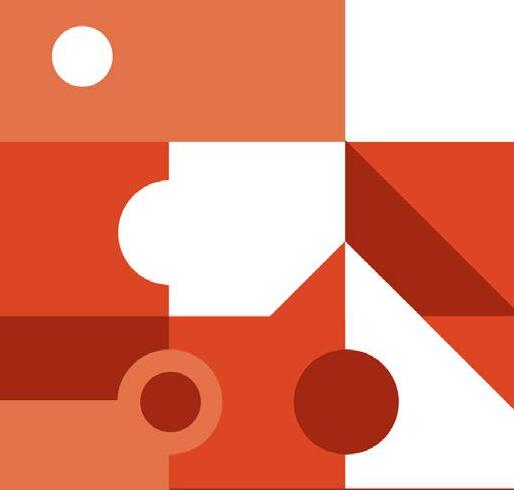










This is relatively welcome news from the United States and will influence the dynamics of the global economy. American inflation, the CPI, in July, was 0.2% and rose 2.9% in 12 months, the lowest percentage since 2021. The weaker pace of activity is bad, as it interferes with global demand, given its economic relevance. However, it is precisely for this reason that excitement begins to open up space for the beginning of the cycle of falling American interest rates, currently between 5.25% and 5.50% per year. The current expectation is that there is a chance of a retreat at the FED meeting in September.
In Brazil, the Central Bank maintained the basic interest rate at 10.50% per year and should continue at this level until the end of the year. A reduction in interest rates could put even more pressure on the exchange rate, fueling an inflationary risk, as investors would seek to place their resources in less risky places, such as Brazil. The dollar had a recent spike, reaching close to R$5.80 for each dollar, but it gave way and returned to oscillating around R$5.40. Even so, still above the level seen at the beginning of the year, of R$ 5 (five reais). The Brazilian currency was one of the most devalued in the world.
The issue of the fiscal deficit is another critical point that prevents a reduction in the SELIC rate. The government continues working to stay within the maximum negative limit, according to the new fiscal framework. In other words, another year of the country spending more than it earns and increasing public debt, which could negatively impact interest rates and inflation.
Although there is an uncertain future scenario for the Brazilian economy, at the moment activity continues at a good pace of growth. According to the Central Bank indicator, the IBC-br, a kind of


preview of GDP, in the first half of the year there was an increase of 2.1%.
In a sectoral analysis, according to IBGE research, retail trade grew by 4% in June and accumulated an increase of 5.2%. The basic segments, supermarkets and pharmacies, drove this good performance with increases of 6% and 14%, respectively.
The job market and real income gains are the main factors stimulating consumption. The unemployment rate in the quarter ending in June was 6.9, the lowest in the historical series for the period, equal to that recorded in 2024. With the improvement in average income, there was a gain in the quarter of almost R$30 billion in workers’ ownership, compared to the same period last year.
The strengthening of purchasing power has also been possible due to more moderate inflation. In June, average prices in the country varied 0.38% and accumulated 2.87% in the year. It is worth highlighting the food and beverage group which, in July, showed deflation of 1%, which is the main expense of the Brazilian family.
General inflation wasn’t lower due to an increase in the price of gasoline and the change in the tariff flag for electricity, from green to yellow, making its use more expensive. In addition to these, due to seasonality, the prices of Tourism services soared due to the high season. Airline tickets, for example, rose 19.39% in July alone (the month is considered high season, due to school winter vacation).
What is noticeable in relation to inflation is that there is not homogeneous pressure, but rather punctual and seasonal, not leading to any risk of lack of control or strong increase in prices, an important point to leave the Central Bank, through the Monetary Policy Council, more likely to reduce the interest rate.
The Tourism sector, in particular, showed growth of 1.9% in the first half of this year, with accumulated revenue of R$95.3 billion, according to the monthly survey by FecomercioSP. The highlight has been the transport rental segment with an increase of 11% from January to June. The airline sector, the most important, showed a slight increase of 1.2%, which can be considered low, but has the factor of reduction in the average fare price throughout the first part of the year.
The industry grew 2.6% in the first half of the year and the services sector as a whole showed an increase of 1.6%.
From all this data, it is clear that there is a disconnection of scenarios, present and future, the first more positive and the second more uncertain. While the economy is benefiting from the booming job market and the real income gain of the
1
Agricultural commodities continue to fall in international markets, contributing to lower inflation. Soybeans, for example, dropped from 10 dollars per bushel, and started the year close to 14 dollars. Likewise, wheat surpassed 7 dollars per bushel in May this year and is now priced just above 5 dollars.
JUNE/2024
population, which inject these resources immediately into sectors of the economy, there is an upcoming moment that could disrupt this growth cycle. The doubt about how the government will balance its accounts, the point of there being a high tax burden, which will remain one of the highest in the world following the Tax Reform currently being discussed in Congress, in addition to external, economic uncertainties and war conflicts, keeps interest rates high and, consequently, inhibits productive investments. The percentage of investment in relation to GDP remains very low and, given growing demand, there may be price pressure at some point. Therefore, despite the good moment for economic activities in the country, Brazil remains in its low growth trap. The present is celebrated, but there are several challenges to be faced in the near future that serve as limits to investments and economic growth.
2
The average interest rate charged in the country to consumers was 51.7% in June, well below the almost 60% per year in June 2023, according to the Central Bank. With relatively cheaper credit, there was a 13.9% increase in concessions for families in the first half of the year.
3
With the climate catastrophe in the state of Rio Grande do Sul, in May, Tourism saw a 15.5% drop in revenue in the months of May and June, leading to a reduction of R$ 220 million in revenue, according to a survey by FecomercioSP.
The Consumer Confidence Index (ICC) grew 0.6% in July and reached 127.8 points. This level is 2.7% higher than that seen in the same period last year. The main aspect for increasing confidence is the real income gain of workers. On the one hand, the heated job market and, on the other, moderate inflation with falling prices in the food group, which weighs most on the budget. The trend remains favorable for the coming months.
The Commerce Business Confidence Index (ICEC) remained practically stable in July, with a variation of -0.2%, remaining at 106.8 points. In the annual comparison, there was a slight increase of 1%. There is a mismatch between consumer and business confidence. The increase in operating costs, reducing product margins, and an unstable economic scenario have limited the advancement of commercial businessman’s optimism.

Note: The ICC and ICEC range from 0 to 200. From 100 to 200 points is considered an optimistic level, and below 100 points is considered pessimistic.
Although the indicators are from the city of São Paulo, they follow the trend of what is happening in the rest of the country as the city, the largest in Brazil, represents 11% of the national GDP.
Events. Events. Many events. The second half of the year is full of them, even more than in previous years, showing an industry recovered from the effects of the pandemic, excited about sales and betting on the end of year season – summer here and winter in the Northern Hemisphere. And still making it clear how important relationships and eye-to-eye are in this sector.
Two months of the second semester have already passed, and despite the usual challenges (Brazil cost, national airlines showing large losses, number of international flights still a little below pre-pandemic levels and, mainly, unfavorable exchange rate for those who earn in real and want traveling abroad) there are high stakes for travel in the coming months.
Domestically, the reopening in October of Salgado Filho Airport, in Porto Alegre, closed since May, will be fundamental to unlocking the important outbound market in Rio Grande do Sul and reopening once and for all the main air access to Serra Gaúcha.
The Brazilian domestic market, however, is expected to grow little in 2024, due to the delay in the arrival of aircrafts, the cut in Gol Airlines’ capacity, due to the entry into Chapter 11, and infrastructure difficulties, as in the case of Porto Alegre and Fernando de Noronha airports. Internationally, the growth is faster, with supply increasing more than 15% compared to last year. Only the United States has not
yet recovered the number of flights to Brazil, compared to pre-pandemic. Which gives more competitive advantage to Europe and the Caribbean, for example.
Sea, river and expedition cruises: in the last summer season, 844 thousand Brazilians took cruises on our coast and this number is expected to increase by 2024/25. Abroad, expedition and luxury ships are the most sought after, in addition to new ships, which have a strong attraction for Brazilians.
Destinations: in luxury, Asia and less crowded countries continue to stand out. Among families, Orlando, and Florida in general, remain unbeatable. Europe has an advantage with lower airfares and lower costs in destinations (compared to the United States, for example). In most European airlines, more than 70% of flights are sold to Brazilians going abroad, which shows the hunger for traveling.
To fight and compensate for the high dollar, destinations must:
• Show value for what tourists are paying;
• Sell combos and offer extra benefits;
• Emphasize unique experiences and authenticity;
• Bet on experienced travelers – from all over Brazil, not only São Paulo and Rio;
• Promote attractions for all ages and types of traveler.


NUMBERS FROM THE LAST MONTH
• Sales from Abracorp’s TMCs reach R$1.1 billion in July and are expected to total R$15 billion in the year – a record for the association.
• CVC Corp sold R$3.54 billion from April to June (Brazil and Argentina) – the biggest growth was in B2C sales (16%). In Brazil, the total was R$2.8 billion.
• Decolar sold R$7 billion in Latin America and R$3.2 billion in Brazil in the second quarter of the year.
• Aviation: The civil aviation sector continues on a growth trajectory. In July, 8.5 million passengers were handled in the domestic market (1% above the figure recorded in
July 2023) and 2.3 million passengers in the international market (17% growth compared to July last year).
The data also shows stability or growth in relation to the month of July 2019, before the start of the Covid-19 pandemic: passenger movement in the domestic market recorded approximately the same numbers, while the international market showed growth of 4.3% .
This is the third consecutive month in which the sector’s main numbers demonstrate stability or growth in relation to 2019 results, which means that the sector has now managed to return to pre-pandemic levels of movement.
This report is produced by PANROTAS and FECOMERCIOSP to support your business decisions. The contents are valuable assets to Destinations and Travel Organizations, both domestic as well as international. For further information please contact ri@fecomercio.com.br redacao@panrotas.com.br



